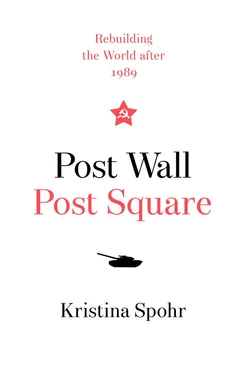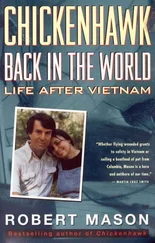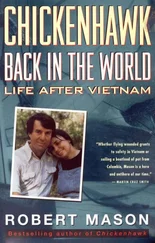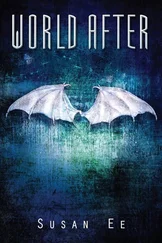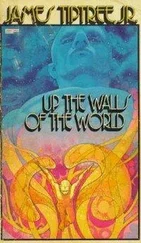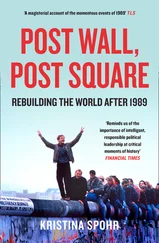Reagan was moving on – and so was Gorbachev. Six months later, the dramatic address at the UN on the morning of 7 December was for the Soviet leader a ‘watershed’ moment. He wanted to present himself as a shaper of international affairs but, unlike Churchill, moving the world out of the Cold War. And he was keen to wrong-foot the Americans, especially at a time of transition between presidents when their foreign policy would be in limbo. ‘The Americans are scared that we might do something as in the spirit of Reykjavik.’ He had been preparing the speech for months, ever since Reagan’s visit, and it went through many drafts, being tweaked right up to the last minute. Gorbachev was determined to use the occasion to show the world his belief in the bright future of the rejuvenated Soviet Union and to confirm his credentials as a visionary peacemaker. And he hoped that by setting out his new political thinking in such an eye-catching way he would secure Western credits and economic assistance. [13]
By the time Gorbachev arrived at the UN, the vast General Assembly Hall was totally packed, with all 1,800 seats occupied. There was a buzz of excited chatter. Expectations were high. Gorbachev stepped up to the podium, dressed in a dark, well-tailored suit, white shirt and burgundy-coloured tie. At the start of his address, he spoke slowly and deliberately but then gathered pace, with increasing sweep and authority. In doing so, he set out his ideological blueprint for how Marxism–Leninism should evolve and how the world should extricate itself from the Cold War. [14]
He began with remarks that drew together Western and Eastern European history around the revolutionary idea: ‘Two great revolutions, the French Revolution of 1789 and the Russian Revolution of 1917, have exerted a powerful influence on the actual nature of the historical process and radically changed the course of world events. Both of them, each in its own way, have given a gigantic impetus to man’s progress.’ Having detoxified revolution and established common ground across the divided continent, Gorbachev expatiated on the universality of human experience – ‘today we have entered an era when progress will be based on the interests of all mankind’ – and insisted that further progress was possible only through a truly global consensus, in a movement towards what he called ‘a new world order’. If that were so, he added, ‘then it is also worth agreeing on the fundamental and truly universal prerequisites and principles for such activities. It is evident, for example, that force and the threat of force can no longer be, and should not be, instruments of foreign policy.’ Here was an explicit renunciation of the ‘Brezhnev Doctrine’ – Moscow’s claimed right to deploy the Red Army within its own sphere of influence to save a fellow communist state – that in 1968 had justified the use of tanks to crush the Prague Spring. Instead, considering the ‘variety of sociopolitical structures’, he declared ‘freedom of choice’ to be a ‘universal principle’ that knows ‘no exception’. [15]
So Gorbachev was thinking big, way beyond the conventional bipolarities of East versus West. After more than forty years of Cold War, he was explicitly advocating the ‘de-ideologisation of interstate relations’ and thereby declaring an end to Third World interventionism. Indeed, with the world as a whole now seriously tackling hunger, disease, illiteracy and ‘other mass ills’, he argued for recognising ‘the primacy of the universal human idea’. Nevertheless, he did not intend to abandon Soviet values: ‘The fundamental fact remains that the formation of the peaceful period will take place in conditions of the existence and rivalry of various socio-economic and political systems.’ However, he went on, ‘the meaning of our international efforts, and one of the key tenets of the new thinking, is precisely to impart to this rivalry the quality of sensible competition in conditions of respect for freedom of choice and a balance of interests’. So the two systems would not blur into each other, but their relationship would become one of peaceful ‘co-development’. In this way, working together, the superpowers would be able to ‘eliminate the nuclear threat and militarism’ whose eradication was essential for world development and the survival of the human race.
In addition to his grand vision, Gorbachev made specific proposals, especially terminating the nine-year intervention in Afghanistan, the USSR’s equivalent of America’s Vietnam, and on disarmament, which he called ‘the most important topic, without which no problem of the coming century can be resolved’. He spoke of the need for a new strategic arms-reduction treaty (START), reducing each superpower’s arsenal by 50%. And, to put pressure on the United States, he unveiled a unilateral proposal to cut the Soviet troop strength in Europe by half a million men over the next two years. In this way Gorbachev sought to initiate a shift from the ‘economy of armament’ to an ‘economy of disarmament’.
Such a conversion had become absolutely essential to underpin his project of a ‘profound renewal’ of the entire socialist society – a project that had grown vastly in scope since 1985 as he developed his big ideas of perestroika and glasnost. Indeed, Gorbachev explained, ‘under the sign of democratisation, perestroika has now spread to politics, the economy, intellectual life and ideology’. Soviet democracy would be ‘placed on a solid normative base’ including ‘laws on the freedom of conscience, glasnost, public associations and organisations’. Nevertheless, in order not to tempt anybody to ‘encroach on the security’ of the Soviet Union and its allies while the Kremlin undertook the much-needed ‘bold revolutionary transformations’, Gorbachev was adamant that the USSR’s defence capability should be maintained at what he termed a level of ‘reasonable and reliable sufficiency’. Such language was a marked change from the pursuit of ‘superiority’ that had dominated East–West relations for most of the Cold War. Serious differences still existed, he admitted, and tough problems had to be resolved between the superpowers but the Soviet leader was essentially upbeat about the future as he looked around the hall: ‘We have already graduated from the primary school of learning to understand each other and seek solutions in both our own and common interests.’ [16]
Near the end of his speech he acknowledged the work of President Reagan and his Secretary of State, George Shultz, in forging agreements. ‘All this’, he said, ‘is capital that has been invested in a joint undertaking of historic importance. It must not be wasted or left out of circulation. The future US administration headed by newly elected President George Bush will find in us a partner, ready – without long pauses and backward movements – to continue the dialogue in a spirit of realism, openness, and goodwill, and with a striving for concrete results, over an agenda encompassing the key issues of Soviet–US relations and international politics.’ [17]Bush was not in the audience – he watched the speech on television – but he could not have missed the message. As Gorbachev had told the Politburo before leaving Moscow, with his diplomatic offensive there would be ‘nowhere for Bush to turn’. [18]
Gorbachev’s aide Anatoly Chernyaev was in the audience. Having helped write the speech, he had expected it would make an impression but was not prepared for the reaction that morning. ‘For over an hour nobody stirred. And then the audience erupted in ovations, and they would not let [Gorbachev] go for a long time. He even had to get up and bow as if he were on stage.’ [19]Gorbachev, a great showman, lapped it all up. Much of the press reaction was also positive. The New York Times editorialised, ‘Perhaps not since Woodrow Wilson presented his Fourteen Points in 1918 or since Franklin Roosevelt and Winston Churchill promulgated the Atlantic Charter in 1941 has a world figure demonstrated the vision Mikhail Gorbachev displayed.’ [20]But others looked behind the occasion and the rhetoric. The Christian Science Monitor , for instance, drew attention to what Gorbachev did not say. There was no suggestion that the Kremlin intended to pull back fully from its farthest positions of strategic influence gained in the Second World War – in East Germany and in East Asia. Indeed the speech said virtually nothing about Asia. Armed forces in Soviet Asia would be reduced, he promised, and ‘a major portion’ of Soviet troops temporarily stationed in the Mongolian People’s Republic would ‘return home’. But there was no mention of the bases in Vietnam, the Monitor complained, and not a word about the four northern Japanese islands seized by Stalin in 1945 whose disputed status had blocked a peace treaty between Japan and the USSR to formally end the Second World War. [21]The newspaper had a point – Gorbachev’s post-Cold War vision was selective – but the UN speech made clear that for him the cockpit of the Cold War lay in Europe. It was there that the tension had to be defused.
Читать дальше
